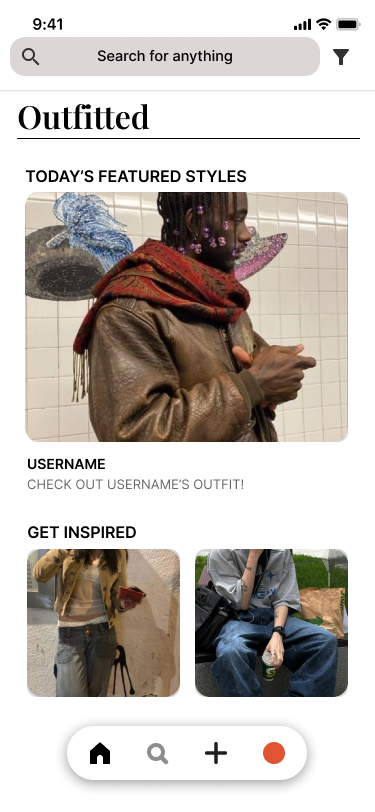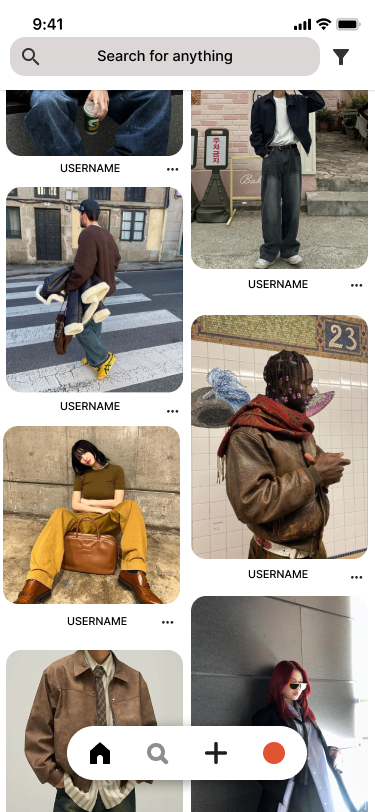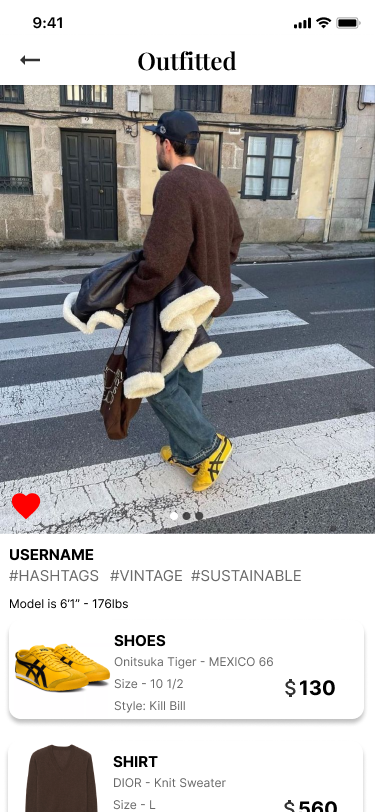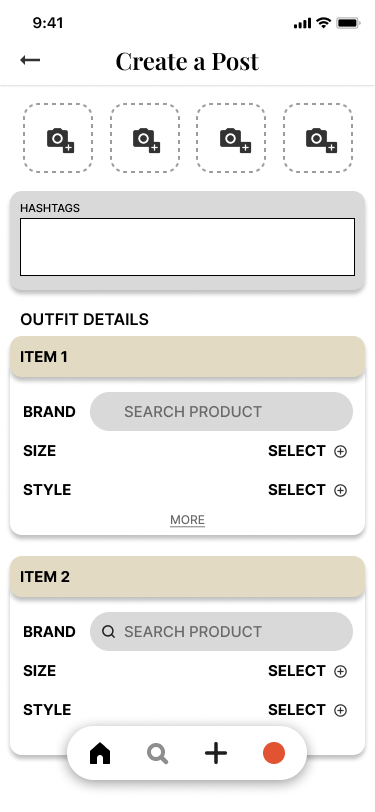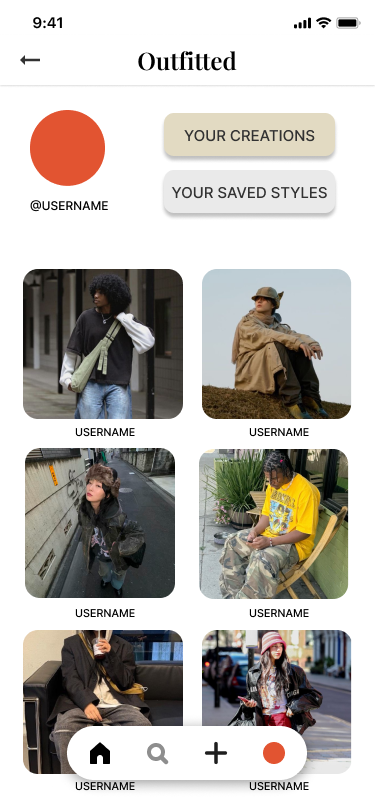Research Phase
To deeply understand the needs and preferences of users for our fashion-focused app, we employed a multi-method research approach that blended surveys, user personas, and competitor analysis.
We began with a Google survey targeting college students interested in fashion, gathering quantitative data on their behaviors, preferences, and desired app features. Questions explored topics such as the frequency of seeking fashion inspiration, favored platforms, and specific functionalities they valued in an app. This survey provided a strong foundation of insights to guide our development.
Building on the survey results, we created detailed user personas to represent key audience segments, including influencers, content creators, and everyday fashion enthusiasts. These personas helped us prioritize user needs and ensure our design decisions were aligned with real-world behaviors and goals.
Additionally, a competitor analysis enabled us to identify trends, successful features, and common user frustrations across existing fashion platforms like Instagram, Pinterest, and TikTok. This market evaluation helped highlight gaps that Outfitted could uniquely address.
Key Findings
Frequency of Seeking Fashion Inspiration:
While 62.5% of respondents regularly look for outfit ideas, 37.5% seek inspiration only occasionally. This diversity suggests the need for Outfitted to balance fresh, timely content with evergreen resources that resonate with both frequent and occasional users.
Popular Platforms:
Respondents heavily favored Instagram, Pinterest, and TikTok, underscoring the competitive landscape and the need for our app to differentiate itself with unique value propositions.
Engagement with Content:
Approximately 50% of respondents showed moderate interest in interacting with posts or following others, indicating potential for fostering meaningful community engagement within the app.
Personal Style:
With 62.5% emphasizing the importance of personal style, Outfitted must prioritize tools that facilitate creativity, self-expression, and individuality.
Quality and Affordability:
Quality was a key factor for 87.5% of users, while 62.5% ranked affordability as highly important. Clear details about clothing quality and pricing are crucial to meeting these expectations.
Diverse User Needs:
The varying habits around seeking fashion inspiration highlight the importance of offering both consistent updates for active users and timeless content for those engaging less frequently.
